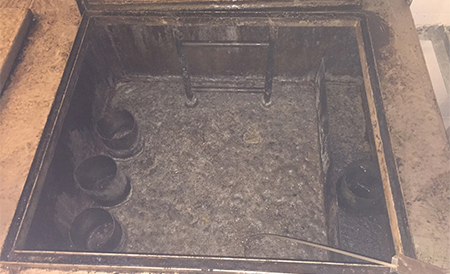The benefits of upgrading the formula of deodorants for waste gas treatment
In recent years, the emission reduction indicators of the steel industry have significantly improved. However, due to the overall large scale, the total energy consumption and pollutant emissions are high, especially in some areas where steel production capacity is the primary gathering point, and pollution emissions have exceeded the environmental carrying capacity. It can be foreseen that in these regions, it is necessary to promote the transformation of clean production technology and further improve the level of emission reduction.
In response to the current situation that most converters in China still use the wet dust removal system to recover converter gas, this paper analyzes its dust removal mechanism and proposes a renovation plan to embed a wet electrostatic precipitator in the existing wet dust removal system. This solves the contradiction between the original wet dust removal system's further improvement of dust removal efficiency and energy consumption, and achieves ultra clean discharge of converter primary flue gas.
With the further improvement of emission requirements for steel enterprises, the effect of wet electrostatic precipitators in flue gas treatment will become more and more significant. In addition to being able to embed wet electrostatic precipitators into existing wet dust removal systems, the transformation of converter primary flue gas can also use new OG wet electricity and LT system wet electricity modes, thereby achieving ultra clean emission of converter primary flue gas.
The common wet dust removal methods for converter OG systems often include coarse dust removal (overflow Venturi tube, scrubbing tower) and fine dust removal (adjustable throat Venturi tube) The RSW ring seam and dehydrator are operated in series. The high-temperature dusty flue gas generated during the converter blowing process begins to cool through the vaporization cooling flue and enters the wet dust removal system for cooling and dust removal. The cooled and full flue gas enters the gas fan and, through the three-way valve, is recovered and used if it meets the conditions for gas recovery. If it is not satisfied with the recovery conditions, it is discharged into the atmosphere.

Plant liquid deodorants are not limited by temperature and other climatic conditions, and are not affected by temperature and environment, making them ineffective. They have strong weather resistance and can fully exert their deodorization effects in high temperatures (below 50 ℃) and high colds (above -15 ℃); Whether in humid or arid areas, its deodorization effect is not affected at all.
Similar to conventional high-voltage electrostatic precipitators, wet electrostatic precipitators used for the transformation of converter primary flue gas consume less energy, have high dust removal efficiency, and are suitable for removing dust of 0.01~50um; Due to the use of flushing for dust removal, secondary dust generation in dry electrostatic dust removal can be prevented, greatly improving dust removal efficiency and stability. Embedding a wet electrostatic precipitator into an existing wet system can achieve ultra clean discharge of primary flue gas from the converter (10mg/m3) without changing the original system. However, the equipment itself occupies less land, has low investment costs, and is flexible and convenient in combination, making it one of the selection directions for the transformation of the converter wet dust removal system. In terms of operating costs, depending on the configuration, the cost ranges from 0.5 to 1 yuan/ton of steel.
The purification and recovery system belongs to the new generation of dust removal technology, which is accepted by steel enterprises due to its advantages of water saving, electricity saving, land saving, large gas recovery volume, and advanced dust removal efficiency; Since 2008, the new construction projects of steel mills have fundamentally adopted dry dust removal technology; Although the wet dust removal system has significant technological advantages compared to the dry method, there are problems in the implementation process, such as limited internal renovation space and lack of land occupation outside the factory building, which make it difficult to convert the wet dust removal system to the dry method. To solve the above problems, a wet electrostatic precipitator based on converter primary flue gas purification has been developed. The wet electrostatic precipitator for converter primary flue gas can be integrated into the existing wet dust removal system, which can maximize the use of the existing system, optimize system configuration, improve dust removal efficiency, and achieve ultra clean emission of converter flue gas.
The article originates from a deodorant manufacturer http://www.scneng.com.hk/
-
06-11
"Environmental Doctor" Du Siyuan: Environmental Protection is a Lifestyle Attitude
There is a Hong Kong compatriot in Jiangmen who often frequents various farms and plantations, walks in mechanical factories, and is seen by others as the nemesis of environmental problems. He conside
-
03-16
Deodorant manufacturer: Deodorants reduce soil pollution
Waste is a chaotic mixture of various components. The accumulation of debris on the surface of soil can cause some chemical reactions, releasing harmful gases, which can lead to soil pollution and eve
-
12-01
Deodorant Manufacturers: Differences between Microbial Deodorants and Traditional Deodorants
The waste that is not needed in our daily life and work is called waste. Due to the large amount of waste discharged and the complex categories, there are great difficulties in reducing waste and deod
-
11-08
Application of Deodorant Manufacturers in Domestic Waste Treatment
Garbage is the waste generated in everyone's daily life and work. Due to its large discharge volume and complex and diverse composition, it poses great difficulties in reducing and deodorizing wa
